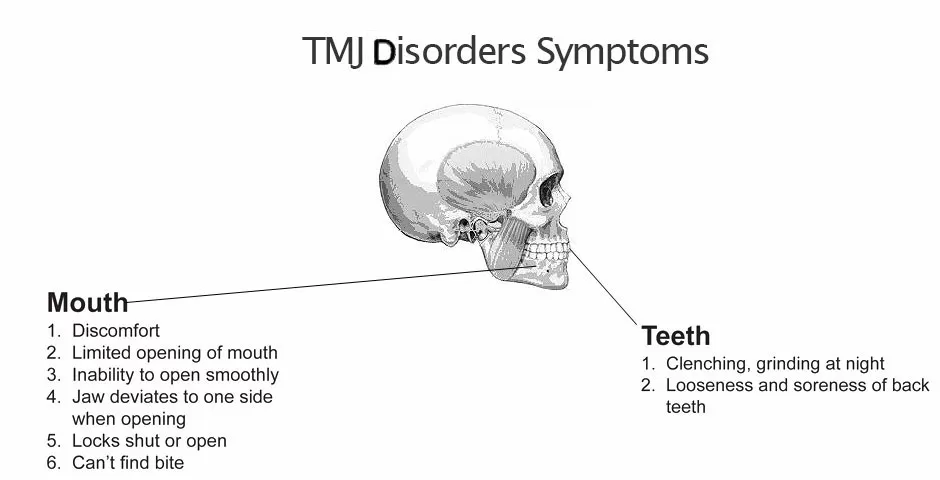Jaw clenching symptoms
Home » » Jaw clenching symptomsYour Jaw clenching symptoms images are ready. Jaw clenching symptoms are a topic that is being searched for and liked by netizens now. You can Get the Jaw clenching symptoms files here. Find and Download all free images.
If you’re searching for jaw clenching symptoms pictures information linked to the jaw clenching symptoms topic, you have come to the right blog. Our website always gives you hints for viewing the highest quality video and image content, please kindly surf and locate more enlightening video content and images that match your interests.
Jaw Clenching Symptoms. Difficulty chewing or pain while chewing; This is when teeth grinding and jaw clenching might start to happen. Pain in one or both of the temporomandibular joints; Limited range of motion when opening the mouth;
 Using Muscle Relaxants for Bruxism How to Treat Bruxism From tmjandsleep.com.au
Using Muscle Relaxants for Bruxism How to Treat Bruxism From tmjandsleep.com.au
Jaw clenching and grinding will lead to many problems including: Most doctors relate teeth clenching to stress and anxiety. Overtime, this leads to more serious dental health problems, such as wear and tear of teeth, cracks, and even loss of teeth. Pain or tenderness of your jaw; This mold will be used to create a splint or guard that you will have to wear. Unconsciously clenching jaws, teeth grinding, and muscle tension are common symptoms of stress and anxiety, along with tension around the shoulders, neck muscles, and clenching of fist.
It doesn’t always cause symptoms, but some people get facial pain and headaches, and it can affect your teeth over time.
Aching pain in and around your ear; Signs and symptoms of tmj disorders may include: Somatic symptoms such as nausea, clenching of teeth, and pain are genuine and not falsely reported. You may also hold your jaw in a clenched position while you’re awake without being aware of it. How to stop teeth clenching. If you are experiencing any of these, consider visiting a dentist in tijuana for a consultation.
 Source: livestrong.com
Source: livestrong.com
Bruxism, teeth clenching, or grinding is a relatively common condition among people today and several factors trigger this condition. Or, at night while you sleep (sleep bruxism). Once your jaw is sufficiently relaxed, your dentist will take an imprint of your jaw by applying a mold with putty onto your teeth. Limited range of motion when opening the jaw, or side to side motion. These warning signs often overlap with bruxism as well.
 Source: youtube.com
Source: youtube.com
You may clench and grind your teeth during the day. Jaw clenching or bruxism is a condition when you grind, clench or gnash your teeth. Somatic symptoms such as nausea, clenching of teeth, and pain are genuine and not falsely reported. You may clench and grind your teeth during the day. Signs symptoms of tmj clenching.
 Source: monashdentalgroup.com.au
Source: monashdentalgroup.com.au
Pain, restricted movement, and clicking sounds from jaw. Cracked teeth (or broken) headaches that concentrate on one side of the head; Limited range of motion when opening the mouth; Some of the most common symptoms resulting from clenching the jaw include: It does not always cause symptoms, but some people get facial pain and headaches, and it can wear down your teeth over time.
 Source: aloeveradental.co.uk
Source: aloeveradental.co.uk
Unconsciously clenching jaws, teeth grinding, and muscle tension are common symptoms of stress and anxiety, along with tension around the shoulders, neck muscles, and clenching of fist. It doesn’t always cause symptoms, but some people get facial pain and headaches, and it can affect your teeth over time. Teeth clenching can happen for a number of reasons, but there are a few things you can do that might keep clenching at bay. If you have ever woken up with a sore face, tight jaw, or a dull headache, you might be clenching jaw unconsciously in the night. Once your jaw is sufficiently relaxed, your dentist will take an imprint of your jaw by applying a mold with putty onto your teeth.
 Source: tmjandsleep.com.au
Source: tmjandsleep.com.au
Depending on the cause and severity, a tight jaw can cause pain or discomfort in the ears, nose, head, teeth, jaw, face and neck, with intensity levels varying from a dull ache to a ‘loud throbbing’. While this normally happens during your sleep, it can also happen when you are awake. Teeth grinding and jaw clenching (also called bruxism) is often related to stress or anxiety. Signs and symptoms of tmj disorders may include: Jaw clenching symptoms are often painful but can help clue you in that it’s time for medical advice.
 Source: telecocamadrid.com
Source: telecocamadrid.com
Other signs you might be clenching your jaw includes: The habit may occur during daytime or nighttime hours, but correcting it usually requires mindful. Tenderness, pain, or fatigue in the jaw muscles. This mold will be used to create a splint or guard that you will have to wear. Jaw clenching and grinding will lead to many problems including:
 Source: friscokidsdds.com
Source: friscokidsdds.com
It doesn’t always cause symptoms, but some people get facial pain and headaches, and it can affect your teeth over time. Sore jaw or facial muscles; Teeth that are flattened, fractured, chipped or loose; These symptoms signal it’s time to see a holistic dentist about your jaw clenching: 6 common symptoms of jaw clenching.
 Source: waterstonefamilydentistry.com
Source: waterstonefamilydentistry.com
Most people who grind their. You may clench and grind your teeth during the day. Jaw clenching or bruxism is a condition when you grind, clench or gnash your teeth. The habit may occur during daytime or nighttime hours, but correcting it usually requires mindful. Tense facial and jaw muscles.
This site is an open community for users to do submittion their favorite wallpapers on the internet, all images or pictures in this website are for personal wallpaper use only, it is stricly prohibited to use this wallpaper for commercial purposes, if you are the author and find this image is shared without your permission, please kindly raise a DMCA report to Us.
If you find this site serviceableness, please support us by sharing this posts to your favorite social media accounts like Facebook, Instagram and so on or you can also bookmark this blog page with the title jaw clenching symptoms by using Ctrl + D for devices a laptop with a Windows operating system or Command + D for laptops with an Apple operating system. If you use a smartphone, you can also use the drawer menu of the browser you are using. Whether it’s a Windows, Mac, iOS or Android operating system, you will still be able to bookmark this website.